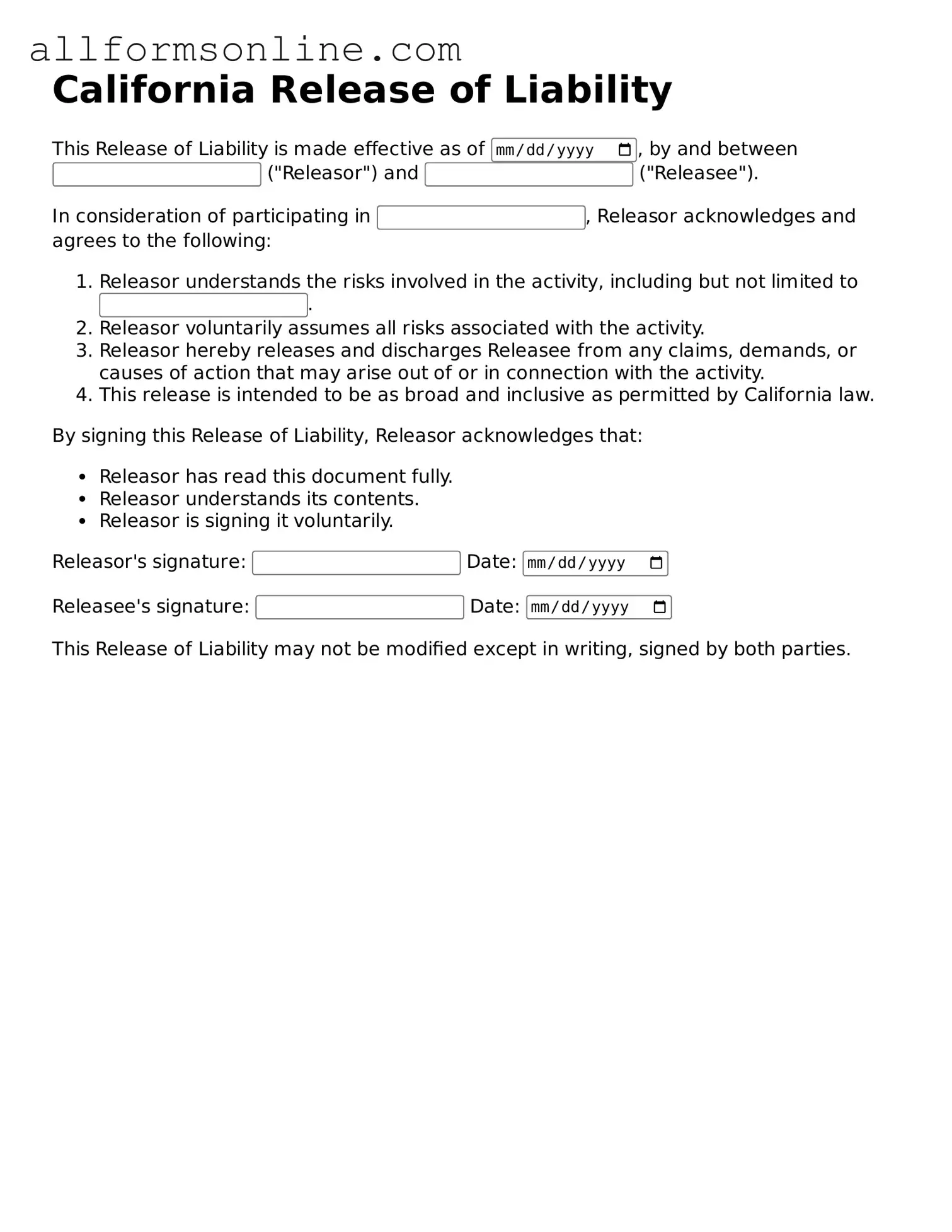What is a California Release of Liability form?
A California Release of Liability form is a legal document that protects an individual or organization from being held liable for injuries or damages that may occur during a specific activity or event. By signing this form, participants acknowledge the risks involved and agree not to hold the organizer responsible for any incidents that may arise. This form is commonly used in recreational activities, sports events, and other situations where there is a potential for injury.
Who should use a Release of Liability form?
This form is beneficial for anyone organizing an event or activity that carries inherent risks. This includes sports leagues, recreational facilities, event planners, and businesses offering adventure activities. Participants in these activities should also be aware of the form, as it serves to inform them of the risks and their rights regarding liability.
Is a Release of Liability form legally binding in California?
Yes, a properly drafted and signed Release of Liability form is generally considered legally binding in California. However, it must meet certain legal requirements to be enforceable. This includes clear language, voluntary consent from the participant, and a thorough explanation of the risks involved. Courts may not enforce a release if it is deemed overly broad or if it attempts to waive liability for gross negligence.
What should be included in a Release of Liability form?
A comprehensive Release of Liability form should include several key elements. First, it should clearly identify the parties involved, including the organizer and the participant. Next, it should outline the specific activity and the associated risks. The form should also include a statement where the participant acknowledges understanding these risks. Finally, a signature line for the participant and, if necessary, a parent or guardian is essential for minors.
Can minors sign a Release of Liability form?
Minors cannot legally sign a Release of Liability form on their own. Instead, a parent or legal guardian must sign on their behalf. This ensures that the minor is protected and that the parent or guardian understands the risks involved. It is crucial to include a section in the form for the parent or guardian's signature to make it valid.
What happens if a participant is injured despite signing the form?
Even with a signed Release of Liability form, a participant may still pursue legal action if they believe the organizer acted with gross negligence or intentional misconduct. The form does not absolve the organizer from all responsibility. Each case is evaluated on its individual merits, and courts will consider the circumstances surrounding the injury.
How can I ensure my Release of Liability form is effective?
To create an effective Release of Liability form, it is advisable to consult with a legal professional who specializes in liability waivers. They can help ensure that the language is clear, the risks are adequately described, and that the form complies with California law. Regularly reviewing and updating the form as necessary is also important to maintain its effectiveness.
Where can I obtain a California Release of Liability form?
California Release of Liability forms can be obtained from various sources, including online legal form providers, local legal offices, or through legal counsel. It is important to use a reputable source to ensure that the form is valid and tailored to your specific needs. Customizing the form to fit the specific activity and risks involved is crucial for its enforceability.
